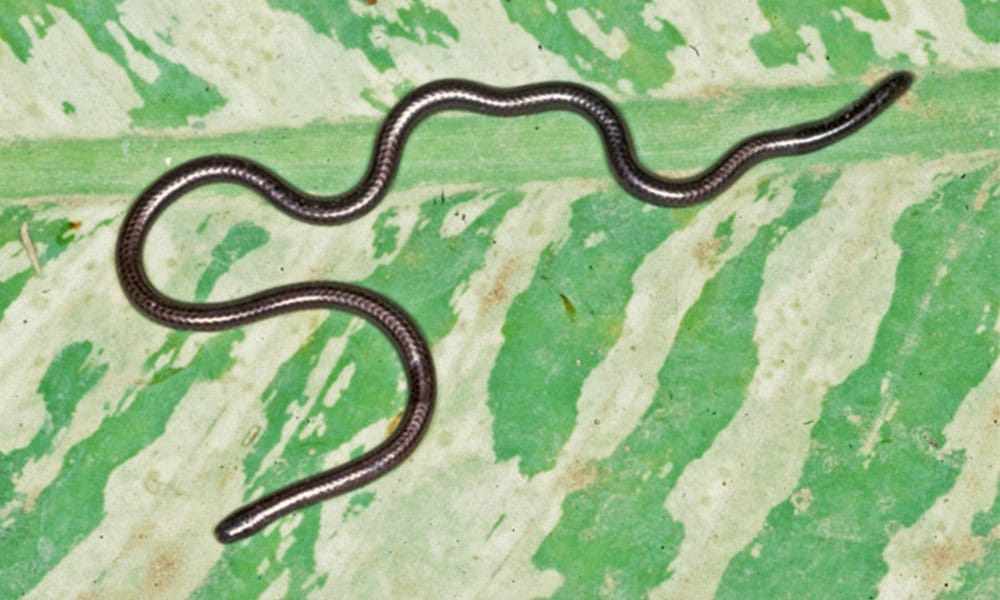Question – What’s both diurnal and nocturnal, fossorial, insectivorous, and oviparous? Answer – the black threadsnake. What does any of that mean? Let’s find out.
The black threadsnake (Epictia ater) is also known as the black blind snake in English. In Spanish, it’s called the culebra hilo de bosque seco, which translates to dry forest threadsnake, or culebrilla ciega hormiguera, which translates to something like little blind ant-eating snake.
The black threadsnake earns its name by being both black and thread-like. It’s almost entirely black with a yellow or cream-colored spot at both ends, one on the head and one on the tail. Identifying which end is the head and which end is the tail is actually quite difficult. The head is bluntly rounded and not at all wider than the neck, and you can’t see its vestigial eyes or any sign of a tiny mouth.
It looks like the neck just ends. The tail end looks the same but instead of being completely rounded, it comes to a little bit of a point. Its skinny cylindrical body is extremely worm-like and doesn’t grow any longer than a little over ten inches, though they are frequently much shorter.
As mentioned above, these snakes are both diurnal and nocturnal as well as fossorial. That means that they’re active both during the day and at night, and they are adapted to living mostly underground. When they’re not found in a shovel-full of soil, or under an overturned rock or log, they’re often discovered inside termite nests.
This leads us to another one of our key words, insectivorous. The black threadsnake’s diet is made up exclusively of invertebrates. The huge bulk of the invertebrates that they dine upon are ants and termites. These strange little snakes possess a secret skill that allows them to enter ant and termite nests without setting off the predator alarm.
Upon entering the nest, they begin to excrete a chemical substance that tricks the inhabitants into thinking their predator is a nestmate, allowing the tiny serpents to chow down on the insects without getting interrupted by the soldiers that would normally expel such an unwanted guest.
Our final keyword, oviparous, describes a little about how these snakes go about creating the next generation. Oviparous species reproduce via eggs. The black threadsnake has been reported to lay clutches of 8 to 12 eggs in June and July. These reports were from other Central American countries in its range, but it’s safe to say something similar is happening with Tico black threadsnakes.
I’m a lifelong rock-flipper, so I run into black thread snakes more than most. I’ve also had the good fortune to see them slithering along out in the open a few times, including last week when I spotted one in the front yard on my way in from the pool. I was just typing how I have a zero percent chance of recorded these teeny tiny snakes with my camera traps when I remembered that I recorded a Pacific screech owl eating a little worm-like snake two years ago.
I can’t guarantee that it was eating a black thread snake, but that would be my bet. I’ll include the owl clip and my wife’s cellphone video of the front yard snake below.
About the Author
Vincent Losasso, founder of Guanacaste Wildlife Monitoring, is a biologist who works with camera traps throughout Costa Rica. Learn more about his projects on facebook or instagram. You can also email him at: vincent@guanacastewildlifemonitoring.com






